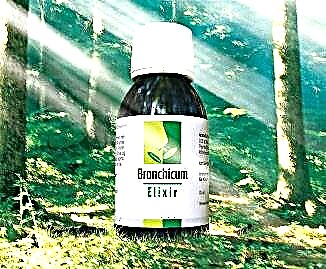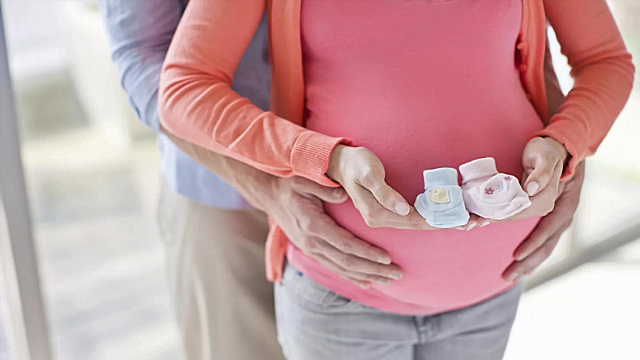
Although there are children whose teething of milk teeth is painless, for most children this process causes discomfort, worsens mood, and interferes with sleep and eating. To help the little ones, special medicines have been developed, presented in the form of a gel. To choose the right drug, parents should find out what gels for teething are, how they affect the crumbs and how to use them.

Teething symptoms
Although teeth are cut in different children in different ways, there are the most characteristic signs of their appearance, which many babies have:
- Increased production and secretion of saliva.
- Redness of the gums and swelling in the area where a new tooth is expected.
- Decreased sleep and appetite, irritable mood and moods.
- The urge to put in your mouth and gnaw on various objects to relieve itching in the gums.
It is also possible a short-term increase in temperature, the appearance of a wet cough, a slight runny nose or stool thinning.
You can learn more about the symptoms of teething in infants by watching the following video.
How can I help my baby?
To make it easier for a child to bear the appearance of milk teeth, parents should:
- Pay more attention to the baby, pick him up often, walk a lot, and continue to breastfeed (while breastfeeding).
- Suggest special toys with water or gel inside. They are called teethers, and before being allowed to gnaw on the crumbs, such toys need to be cooled briefly in the refrigerator.
- Massage the itchy gums with your fingertip, or a moistened gauze pad put on your finger.

You can find out how else you can help your child cope with unpleasant sensations by looking at the following video fragment.
How do gels work?
Any gel recommended for teething of deciduous teeth has a short-term local effect.
Depending on the effect on the child's body, teething gels are:
- Pain relievers. The main component of such drugs is the anesthetic, which is often represented by lidocaine. In such gels, a pronounced cooling local effect is noted, and the effect is observed quite quickly. In addition to lidocaine or another anesthetic, other ingredients are added to the cooling gels to help reduce inflammation or have an antiseptic effect. These gels include Kamistad, Dentinox, Kalgel and Dentol-baby.
- Anti-inflammatory. These gels eliminate local inflammation and reduce tissue swelling, resulting in less soreness. The representative of the gel for teething with such an effect is the drug Cholisal.
- Homeopathic. Such gels include herbal ingredients with anti-inflammatory and analgesic effects. These include drugs Baby Doctor and Pansoral.

Review of the best gels
The most commonly used for children with teething are:
- Calgel. This combination remedy, which contains lidocaine hydrochloride, facilitates teething, rapidly relieves sore gums, and helps reduce inflammation. The medicine is approved for use from 5 months of age, but it has a rather large list of contraindications and a high risk of allergy to its components.

- Kamistad. This is a gel in which lidocaine at a concentration of 2% is supplemented with a herbal component represented by chamomile tincture. It has anesthetic, wound healing, antiseptic and anti-inflammatory effects. Because of these effects, this gel is often used by adults, for example, when wisdom teeth are being cut. Due to its high content of lidocaine, it is not recommended for infants and often causes allergies. Also, it should not be used in situations where the gums are damaged or inflamed.

- Holisal. It is a drug that reduces local inflammation and edema of the gums. The high content of anise in its composition can cause increased salivation, therefore, the medicine is not recommended for teething in infants. It is approved for use only in children over a year old. In addition, such a gel is more expensive than other drugs used for teething.

- Dentinox. This is a combined agent, the main active ingredients of which are lidocaine and polidocanol. Such anesthetics are supplemented with chamomile tincture, so the use of such a drug quickly eliminates pain and reduces inflammation. The gel is indicated for teething in children over 4 months of age, and is also often used in adults. At the same time, the medicine often causes allergies, is prohibited for people who are sensitive to fructose, and should not be used in case of gum damage.

- Baby doctor. It is a gel containing natural ingredients that have properties to reduce inflammation and soothe mucous membranes. The remedy includes extracts from plants such as chamomile, marshmallow root, calendula, plantain, and echinacea. In addition, there is no alcohol in its composition. The drug is approved for use in babies over 3 months old and the number of applications to the gums is not limited, but there is a risk of developing allergies to its components.

- Dentol-baby. The anesthetic effect of this gel is due to the presence of benzocaine in its composition. The medicine is characterized by low toxicity, no irritating effect on the mucous membrane, and also low price. Moreover, such a gel is contraindicated for inflammation or damage to the gums and is capable of provoking allergies.

- Pansoral. Due to the content of plant extracts from marshmallow, chamomile and saffron in such a gel, the drug soothes and softens the mucous membrane. The medicine can be applied to the gums of children older than 4 months, but the analgesic effect of this gel is relatively small.

Tips for choosing
When choosing a gel that will help an infant with painful teeth, you should definitely consult a pediatrician. Since most of the gels recommended for teething children include herbal ingredients, they can provoke allergies. That is why, when choosing this or that gel, one should take into account the child's tendency to allergic reactions and the presence of contraindications.

It is worth paying attention to the fact that each gel has its own age restrictions, which must be taken into account when buying a medicine.
Instructions for use
Having studied the annotation attached to the drug, it is important not to forget about such nuances of using gels:
- The medicine is used for severe discomfort in the baby from teething, often before bedtime or before eating.
- The frequency of application is every 3-4 hours, but most drugs should not be applied to the baby's gums more often 3-5 times.
- The amount of gel applied to the baby's gums should be small.
- For application, use a carefully washed finger or cotton swab.
- The gel is applied with massage in a circular motion without pressure on the child's gum.

How to avoid problems?
If you disregard the information in the instructions for the gel and advice on its use, complications such as allergies and inflammation of the gums, up to suppuration, may occur. At the same time, both anesthetic gels and herbal preparations can cause allergic reactions. To exclude their occurrence:
- Choose the right medication with your baby's doctor from birth.
- Only use gels in situations where other ways to soothe a teething infant will not work.
- Strictly follow the recommendations for the frequency of use.
- Stop using the product immediately if you experience any side effect.

Watch the program of Dr. Komarovsky, the theme of which is "First Teeth".



